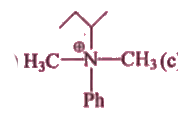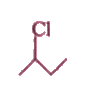Bromocyclodecane on heating with ethanolic KOH, produces two alkenes. Write the two products also mentions the major one.
The correct Answer is:(##RESCHMORMIVE01007_A01##)
To solve the problem of what products are formed when bromocyclodecane is heated with ethanolic KOH, we can follow these steps:
Step 1: Understand the Reactant
Bromocyclodecane is a cyclic alkane with a bromine atom attached. The structure can be represented as follows:
Br∣∣∣C1−C2C10C3∣∣∣|C9C4|∣C8C5 C7−C6
Step 2: Identify the Reaction Type
When bromocyclodecane is treated with ethanolic KOH, an elimination reaction occurs. This is typically an E2 elimination where the bromine atom is removed along with a hydrogen atom from an adjacent carbon.
Step 3: Determine Possible Elimination Sites
In bromocyclodecane, elimination can occur from two different positions:
1. Removing a hydrogen from the carbon adjacent to the carbon with the bromine (C1 or C2).
2. This can lead to the formation of two different alkenes.
Step 4: Draw the Possible Products
1. Cis Product: When elimination occurs between C1 and C2, the product formed is a cis-alkene.
2. Trans Product: When elimination occurs between C1 and C2 but from the opposite side, the product formed is a trans-alkene.
The structures can be represented as follows:
- Cis Product:
HC1=C2C10C3||C9C4||C8C5 C7−C6
- Trans Product:
HC1=C2C10C3||C9C4||C8C5 C7−C6
Step 5: Identify the Major Product
In elimination reactions, the stability of the alkene plays a crucial role in determining the major product. Generally, the more substituted alkene is more stable and thus is favored in elimination reactions.
In this case, the cis product is more stable due to steric factors and is therefore the major product. The trans product is less stable and is the minor product.
Conclusion
The two products formed from the reaction of bromocyclodecane with ethanolic KOH are:
1. Cis-alkene (major product)
2. Trans-alkene (minor product)
Bromocyclodecane is a cyclic alkane with a bromine atom attached. The structure can be represented as follows:
When bromocyclodecane is treated with ethanolic KOH, an elimination reaction occurs. This is typically an E2 elimination where the bromine atom is removed along with a hydrogen atom from an adjacent carbon.
In bromocyclodecane, elimination can occur from two different positions:
1. Removing a hydrogen from the carbon adjacent to the carbon with the bromine (C1 or C2).
2. This can lead to the formation of two different alkenes.
1. Cis Product: When elimination occurs between C1 and C2, the product formed is a cis-alkene.
2. Trans Product: When elimination occurs between C1 and C2 but from the opposite side, the product formed is a trans-alkene.
- Cis Product:
HC1=C2C10C3||C9C4||C8C5 C7−C6
- Trans Product:
HC1=C2C10C3||C9C4||C8C5 C7−C6
In elimination reactions, the stability of the alkene plays a crucial role in determining the major product. Generally, the more substituted alkene is more stable and thus is favored in elimination reactions.
The two products formed from the reaction of bromocyclodecane with ethanolic KOH are:
1. Cis-alkene (major product)
2. Trans-alkene (minor product)
Topper's Solved these Questions
- ORGANIC REACTION MECHANISMS-IVBOOK - RESONANCE ENGLISHCHAPTER - ORGANIC REACTION MECHANISMS-IVEXERCISE - Exercise-1 Part-2
20 Videos
- ORGANIC REACTION MECHANISMS-IVBOOK - RESONANCE ENGLISHCHAPTER - ORGANIC REACTION MECHANISMS-IVEXERCISE - Exercise-1 Part-3
2 Videos
- ORGANIC REACTION MECHANISMS - IIBOOK - RESONANCE ENGLISHCHAPTER - ORGANIC REACTION MECHANISMS - IIEXERCISE - APSP Part - 3
22 Videos
- PERIODIC TABLE & PERIODICITYBOOK - RESONANCE ENGLISHCHAPTER - PERIODIC TABLE & PERIODICITYEXERCISE - ORGANIC CHEMISTRY(BASIC CONCEPTS)
27 Videos
Similar Questions
When 1-Bromo-1-methylcyclohexane is heated in ethanol for an extended period of time, three products result : one ether and two alkenes . Predict the products of this reaction, and propose mechanism for their formation.Also, mention the major elimination product.
View SolutionAn aromatic compound A on heating with Br, and KOH forms a compound B of molecular formula CHN which on reacting with CHCI and alcoholic KOH produces a foul smelling compound C. Write the structures and IUPAC names of compounds A, B and C.
View Solution
Knowledge Check
Type of elimination reaction in which least substituted alkene is major product known as Hofmann's elimination. Such reaction occur in following conditions : (X) when base is bulky
(Y) when leaving group is very poor such as fluoride, ammonium group (−⊕NR3) etc.
(Z) when alkyl halide contain one or more double bonds.
Which of the following will not produce Hofmann's alkene as major product on reaction with strong base?A B
B C
C D
D
Ethanol reacts with sodium and forms two products. These products are
ASodium hydroxide and hydrogen gasBSodium ethanoate and ethanoic acidCSodium ethoxide and hydrogen gasDSodium hydroxide and ethanoic acid
Ethanol reacts with sodium and forms two products. These are
View SolutionWrite two major functions each of testis and ovary.
View SolutionWrite two major functions each of testis and ovary.
View SolutionThe product of eccentricities of two conics is unity, one of them can be a/an
View SolutionWhat is the major product obtained when 2-bromobutane is heated with alcoholic KOH? Write only the major product expected to be obtained.
View SolutionWrite the products formed in the given reaction, also mention type of reaction:
HCOOH+KOH→
View Solution
